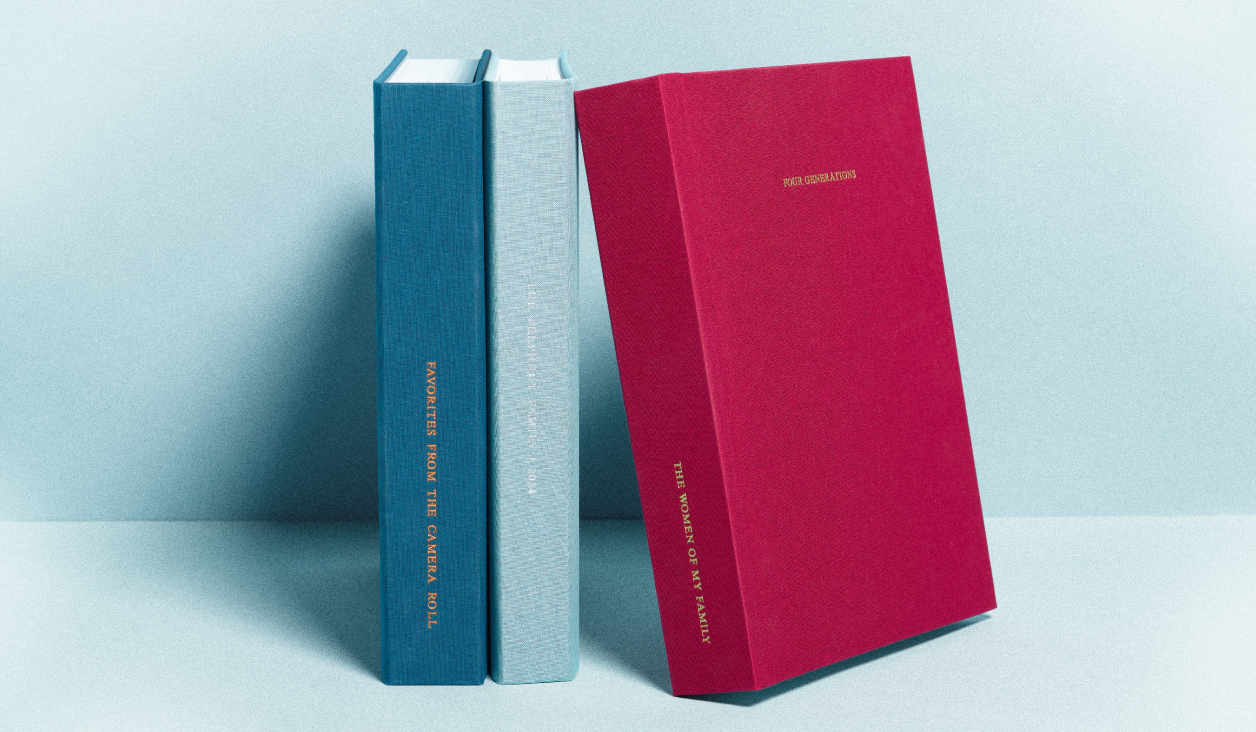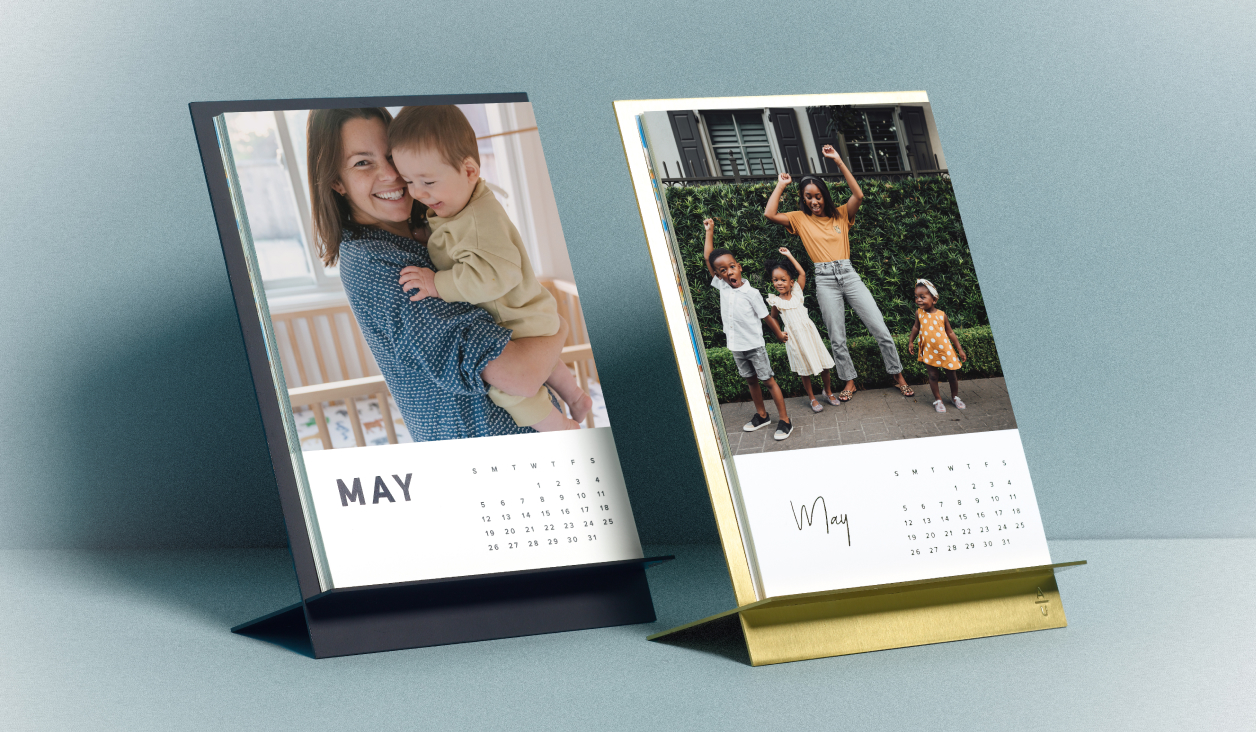In 2013, design duo and high school sweethearts Rich and Sara Combs set out to build a personal creative retreat in the Mojave Desert. But when they listed the house on Airbnb as a way to fund the project, they quickly found that others were in search of the same solace.
From then on, what started as a vision of a humble hacienda has transformed into a coveted and well-known escape — one catering to those in search of a slower, more deliberate lifestyle (if only for a few days). It is the stuff of desert fairy tales, set in nature, swept in sand, rooted in story.
Now, Sara and Rich are preserving The Joshua Tree House story, reimagining our Scrapbook Album to show how they reinvented the space. Here, we sit down with the two of them to chat about it all — and take a little peek at how they used the book to tell their story, their way.
How The Joshua Tree House Put Its Story in Print
An Interview With Rich & Sara Combs

How did The Joshua Tree House become a reality? Was it always "the dream" or a product of serendipity?
Sara:
It started when we left our full-time jobs as designers in San Francisco. We were craving change, so we went on this cross-country roadtrip, stopping at different national parks along the way.
When we got to Joshua Tree for the first time, we felt this connection. It was like a magnet. We moved to New York after the trip, but we kept feeling the pull. It was really just a personal craving: We wanted to build something, have a space of our own, and feel a little more connected to nature.
Down the road, when we put the space on Airbnb to help make up the cost of the project, we found a lot of people out there were craving the same things we were. That's when the idea expanded beyond just something for us — it became something for other people. An experience. A space to reflect, reset, and create.


What new perspectives has the journey of finding and reinventing these spaces given you?
Sara:
For one, the landscape is such a breath of fresh air. So open. Just being able to look out and see the endlessness puts you at peace. It's gotten us to appreciate the simple things. We feel so much more connected to the sun. We see it rise on the horizon and set on the horizon. We're so much more aware of that time passing.
We've tried to incorporate that simplicity into our designs. It's a way of showing that simple and ordinary experiences have the potential to become special when we take the time.

Simple and ordinary experiences have the potential to become special when we take the time.
Storytelling seems to be such a big piece of the puzzle. Why is it so important to document and share the stories surrounding The Joshua Tree House?
Sara:
It's all about the experiences. When we design spaces, it's not just a pretty photo or a pretty space. You're in that space, experiencing it and everything in it. It's a story, right? It's what you're eating and talking about and smelling and how it feels. That's all really important to us.
Rich:
It's about those long-lasting memories that come from bringing people together — those shared experiences at our locations that become shared stories once they leave.


What was the thought process behind how brought The Joshua Tree House story to life in the scrapbook?
Sara:
It came from the questions that so many of our guests ask: "What did this place use to be? What did it look like? Who built it?" We wanted to create something that would answer those questions for people in a way that really shows them.
It was cool because we had letters and photos from the previous owners, and it became a way to wrap their stories in with our story. That's why we love old buildings so much — they already have their own stories. They become something you can build on.
So we started out there, then showed some in progress photos, writing a bit about who was involved and what it was like. At the end, we include some new photos, but it's mainly about the progress from what it used to be to what it became.
Rich:
Exactly. It's a story about transformation more than anything else.


What were some of your favorite elements within the book?
Sara:
I really loved the little folders. We had found this old letter from one of the previous owners, and she's talking about things like what color she had painted the walls. There's just such a sense of pride in there. It was really sweet. I loved tucking that into the folder for someone to find later.
Rich:
I think it's so cool how interactive it is. It's meant for more than flipping pages. It kind of reminds me of those old pop-up books from when I was a kid. You pull this tab, you open that one, something happens. It was really fun to interact with.

Were these photos and stories already printed before you started the book?
Sara: We had the old letter and the old photos, but everything else was digital. It was really satisfying printing those out and actually looking at everything side by side, instead of just in a Dropbox folder.
...when you step back and look at it all together like that, it hits you.
What was it like to reflect on the Joshua Tree House Story as you put the book together?
Rich:
Working on the project was such an intense time of our lives, we never had a chance to stop and just enjoy the moment. Going back and looking through everything allowed us to appreciate that time and the decisions we made in a way we couldn't back then.
Sara:
It might not feel like it in each individual day, but when you step back and look at it all together like that, it hits you.

Any advice for someone who wants to create their own scrapbook?
Sara: Start with the photos. Pick your favorites and print them out. Once you actually have them in hand, then you begin to get a sense of the pieces that fit together and how the dots connect. It was so fun to lay it all out on the table and begin to draw those connections.









